
Mammals Around Las Vegas, Wildlife Around Las Vegas
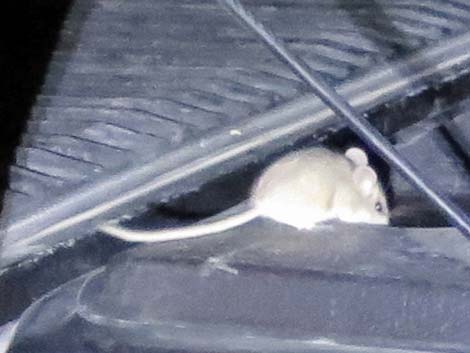 Canyon Deermouse drinking water spilled on a tailgate |
The Canyon Deermouse (Peromyscus crinitus) is a species of desert mice with medium-length ears and long tails. The dorsal color is ocherous or reddish with darker colors along the center of the back. The underside and feet are whitish. The tail is considerably longer than the body and is bi-colored. Technical Description: The head-and-body length (stretched out) is about 80 mm, the tail is about 100 mm, the ear and hind-foot are about 20 mm long, and they weigh about 20 g (females slightly heavier than males). Tail bi-colored, hairs on tip at least 8 mm long. Canyon Deermice look like all of the other "deer mice" (members of the genus Peromyscus) and can be difficult to identify with certainty. For the lay person, passing them off as "deer mice" is good enough. For those concerned, consult range maps to ensure that this species is a possibility in the area, then rule out other possibilities by examining the ears and tail. Around Las Vegas, the possibilities are Cactus Deermouse, Canyon Deermouse, North American Deermouse, and Pinyon Deermouse. |
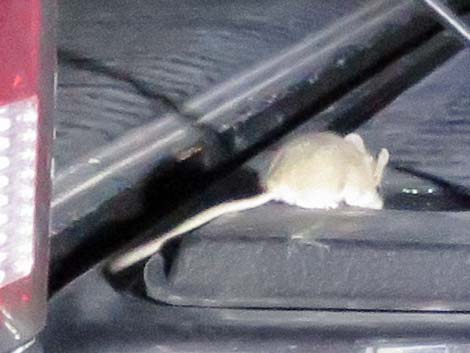 Canyon Deermouse drinking water spilled on a tailgate |
In the Canyon Deermouse, the ears are short, which rules out Pinyon Deermouse (ears more than 1 inch long). The tail is bi-colored, but the line between the dark top and light underside is indistinct, ruling out Deer Deermouse (distinct line). The tail is covered with long hairs, and the hairs on the tip of the tail are long (extending about 8 mm beyond the end of the tail), ruling out Cactus Deermouse (which have scantly clad tails and the hairs on the tip of the tail are short). Canyon Deermice live in middle-elevation vegetation communities in the Upper Sonoran (Mojave Desert Scrub) and higher life zones and often are the most common "deer mice" in the Mojave Desert. They build nests under rocks, in old burrows of other animals, and in piles of dead vegetation. They sleep during the day and forage during the night on seeds and vegetation. They also eat bugs and carrion when they can, and they happily raid camper food. Canyon Deermice are preyed upon by everything: snakes, owls, kit fox, large scorpions, lizards, and anything else that can catch them. They have high reproductive rates (lots of litters and lots of pups per litter), so they can survive high predation rates. |
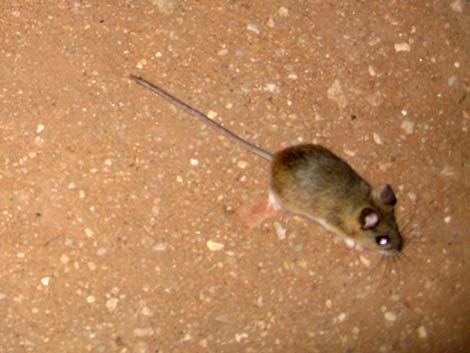 |
All deer mice, including Canyon Deermouse, carry Hanta Virus, a potentially deadly disease that attacks the respiratory system with flu-like symptoms. Despite the occasional hysteria, it is difficult to contract hanta virus. I have handled thousands of Peromyscus, often in less than sanitary conditions, and I've never died or even gotten sick from hanta virus. |
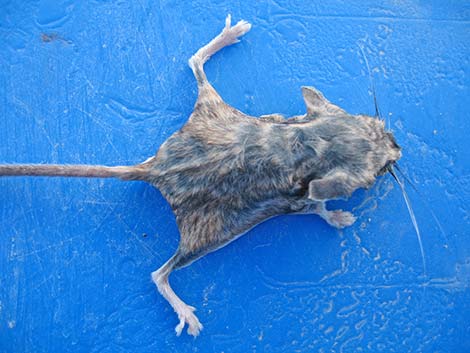 |
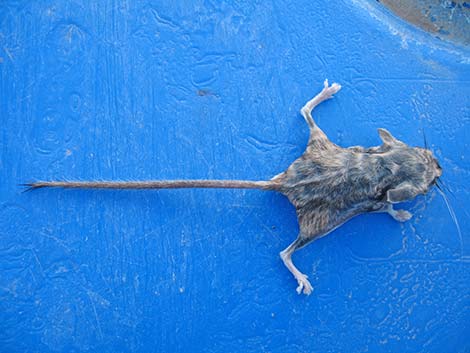 |
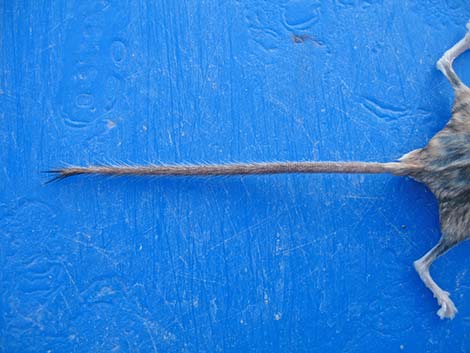 Long hairs on the tail, especially off the tip |
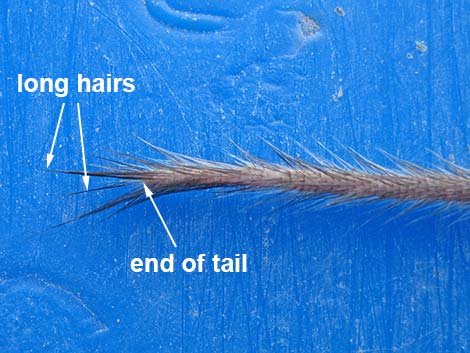 Long hairs on the tail, especially off the tip |
Note: All distances, elevations, and other facts are approximate.
![]() ; Last updated 231217
; Last updated 231217
| Mammals Around Las Vegas | Wildlife Around Las Vegas | Glossary | Copyright, Conditions, Disclaimer | Home |